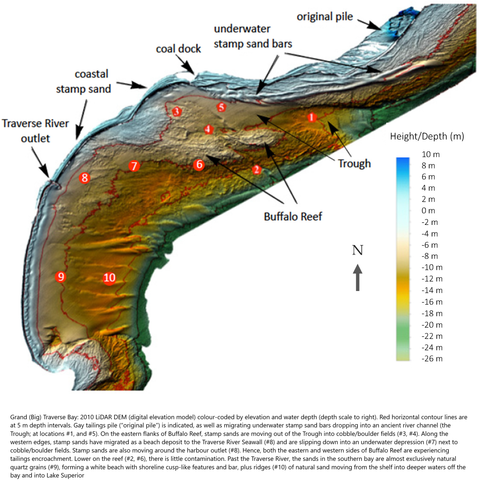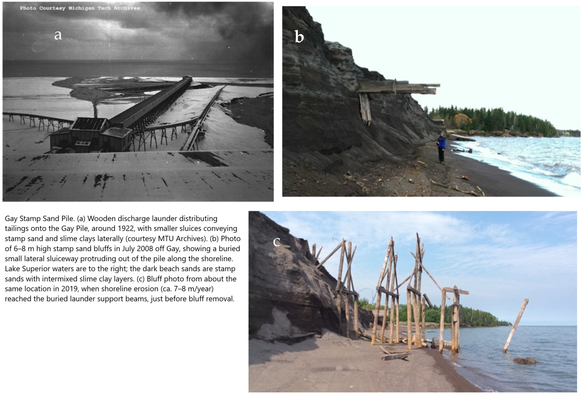Coastal Environments - LiDAR Mapping of Copper Tailings Impacts, Particle Retention of Copper, Leaching, and Toxicity
--
https://doi.org/10.3390/rs17050922 <-- shared paper
--
#GIS #spatial #mapping #remotesensing #earthobservation #coastalenvironment #coast #coastal #mine #tailings #minetailings #GlobalTailingsManagementStandard #Keweenaw #LiDAR #bathymetry #topobathy #UAS #drone #particledispersal #copper #retention #leaching #BuffaloReef #toxicity #Daphnia #benthic #organisms #risk #hazard #contamination #impacts #sediment #water #hydrology #Michigan #USA #LakeSuperior #PortageLakeVolcanic #geology #spatialanalysis #biology #ecosystems #fisheries #trout #enviornmentalimpacts #leaching #riparian #systems
#GlobalTailingsManagementStandard
Client Info
Server: https://mastodon.social
Version: 2025.07
Repository: https://github.com/cyevgeniy/lmst


![aerial images - UAS high-resolution drone elevation and bathymetry surveys (base map 9 August 2022) of shoreline retreat at the original Gay pile location after bluff removal. Overlays along the beach edge trace shorelines in 2009, 2016, and 2022. The 78 m retreat over 6 years (2016–2022); equates to a 13 m/yr rate. The previous, nearly constant, long-term retreat rate prior to 2009 averaged 7.9 m/yr (ca. 26′) [7,57]. The original Jacobsville Sandstone shoreline, before stamp sands were discharged, is marked by the red border in the far-left upper region. Note white concrete basements of the two mills and remnants of both wooden and broken concrete launders in the northern region. Environmental recovery is beginning, as benthic organisms and fish are returning to clear underwater stretches of the bedrock shelf, where waves have removed stamp sands. Scattered trees (many birch) are beginning to colonise what is left of the original Gay Pile surface.](https://files.mastodon.social/cache/media_attachments/files/114/181/087/718/405/194/small/065f79c8b29e2466.png)
